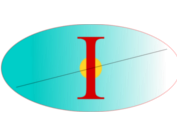Citation:
![Revisiting the benzene excimer using [2, 2] paracyclophane model system: Experiment and theory Revisiting the benzene excimer using [2, 2] paracyclophane model system: Experiment and theory](https://scholars.huji.ac.il/sites/default/files/styles/book_cover/public/roibaer/files/paracyclophane_0.jpg?m=1716912507&itok=1MwLYZGy)
Date Published:
26 Mar, 2024Abstract:
We report high-level calculations of the excited states of [2,2]-paracyclophane (PCP), which was recently investigated experimentally by ultrafast pump-probe experiments on oriented single crystals [Haggag et al., ChemPhotoChem 6 e202200181 (2022)]. PCP, in which the orientation of the two benzene rings and their range of motion are constrained, serves as a model for studying benzene exciplex formation. The character of the excimer state and the state responsible for the brightest transition are similar to those in benzene dimer. The constrained structure of PCP allows one to focus on the most important degree of freedom, the inter-ring distance. The calculations explain the main features of the transient absorption spectral evolution. This brightest transition of the excimer is polarized along the inter-fragment axis. The absorption of light polarized in the plane of the rings reveals the presence of other absorbing states of Rydberg character, with much weaker intensities. We also report new transient absorption data obtained by a broadband 8 fs pump, which time-resolve strong modulations of the excimer absorption. The combination of theory and experiment provides a detailed picture of the evolution of the electronic structure of the PCP excimer in the course of a single molecular vibration.



